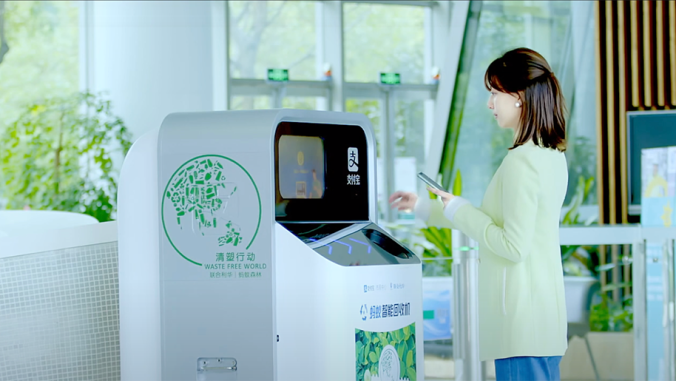Poo and power: Electrification and manure offer competing paths to decarbonize HGVs
Tevva and CNG Fuels announce new plans to deliver greener trucks.

CNG has announced plans to become the United Kingdom's first supplier of carbon neutral fuels for HGVs.
Two competing methods of tackling the climate impact of Heavy Goods Vehicles (HGVs) launched in the United Kingdom this week, one based on electrification, the other on carbon-negative biogas made from manure.
On Wednesday, electric commercial vehicle pioneer Tevva unveiled its Electrify initiative, aiming to drive the electrification of medium-duty HGVs through the deployment of up to 50 electric trucks across the United Kingdom and Europe over the next six months.
Tevva has developed a package of EV technologies tailored for HGV vehicles, including battery packs, fleet management systems and advanced cloud-based software that uses geofencing capabilities to autonomously control a range extender and ensure vehicles can switch to zero-emissions mode to optimize efficiency and minimize air pollution in built-up areas.
Over the next two years, firms will be able to rent one of 50 vehicles equipped with this technology for a three- to six-month trial period. Tevva then will provide the firms with detailed telematics data showcasing the vehicles' efficiency, such as mileage completed, energy consumed and grid energy used.
The vehicles then will be available to buy from the end of 2020.Over the next 2 years, firms will be able to rent one of 50 vehicles equipped with this technology for a 3- to 6-month trial period.
The trials are targeted at a wide range of urban distribution sectors, including food, healthcare and janitorial services, the firm said.
"When Tevva was founded in 2013, the question that businesses were asking was whether or not electric trucks could displace diesel in the commercial vehicle sector," said David Thackray, sales and marketing director at Tevva. "The question today is 'when' they will displace diesel.
"The big players in the transport industry already see the benefits, opportunities and potential of technology like ours but too many businesses in the U.K. and across Europe still have a relatively low level of awareness. Electrify will enable a better understanding and increased adoption to accelerate significantly by proving beyond any possible doubt in real-world environments that logistics electrification technology is ready to displace diesel now."
Thackray said that in offering customers the chance to trial the technology the company expects to amass data on around 2.5 million miles of journeys, providing extensive real-world evidence that electric range extenders and supporting technologies can deliver environmental benefits while providing firms with a 20 percent cut in the total cost of ownership for their HGV fleets.
"What we want Electrify to do is to put to bed the argument over how this technology can enable electric vehicles to truly displace diesel from an operational, environmental and economic perspective," Thackray said.The race to electrify road haulage is heating up globally with a host of companies around the world starting to deploy both plug in hybrid and pure electric trucks.
The race to electrify road haulage is heating up globally with a host of companies around the world starting to deploy both plug in hybrid and pure electric trucks. Only this week, Tesla's Elon Musk announced the company's new Cybertruck pick-up truck will be unveiled Nov. 21, joining the Tesla Semi electric HGV in the company's expanding line up for business customers.
Cybertruck unveil on Nov 21 in LA near SpaceX rocket factory
— Elon Musk (@elonmusk) November 6, 2019
However, alternative approaches to HGV decarbonization are also gathering ground.
Progressive Energy confirmed this week it has secured planning permission for a new $192.20 million biogas plant that intends to convert waste into green fuel for HGVs and buses, boasting the site could provide fuel for 1,000 low carbon HGVs each year.
And this week, CNG Fuels announced plans to become the United Kingdom's first supplier of carbon-neutral fuel for HGVs using a timeworn power source: manure.
Manure gives off methane, a greenhouse gas 28 times more powerful than carbon dioxide. Converting manure into an HGV fuel prevents it from entering the atmosphere, reducing overall emissions and allowing the EU to recognize it as a carbon-negative fuel. CNG said it is finalizing supply lines for biomethane made from manure, and expects to begin offering the fuel from 2021.
The company currently sources biomethane from food waste, supplying Bio-CNG (compressed natural gas) which cuts vehicle greenhouse gas emissions by up to 85 percent. However, by shifting to biomethane sourced from manure, it will be able create a fuel that is net zero on a lifecycle basis, the firm said.The company currently sources biomethane from food waste, supplying Bio-CNG (compressed natural gas) which cuts vehicle greenhouse gas emissions by up to 85 percent.
The firm also announced that it is in the process of developing a network of HGV refueling stations, to enable it to reach fleet operators across the United Kingdom. Stations are to be supplied with biomethane via the existing gas grid, compressing it into fuel at the point of delivery. The strategic network then would be well-placed to support battery-electric and hydrogen-powered HGVs in the future, in line with CCC recommendations, according to CNG CEO Philip Fjeld.
"We want to help decarbonize freight transport and enable fleet operators to meet net zero targets now, supporting the U.K.'s climate targets," Fjeld said. "Renewable biomethane sourced from manure is currently the best low-carbon solution for HGVs, but we want to be ready to support our customers when other technologies are commercially viable for freight transport."
The moves represent a boost for CNG's customers, which include household names such as John Lewis, Asda, Argos and delivery service Hermes. John Lewis already runs 80 of its trucks on biomethane and is set to expand its green fleet to around 200 vans over the next 18 months, while Hermes is expected to source fuel for 200 delivery trucks.
HGVs account for a massive 4.2 percent of total U.K. carbon emissions, while transport emissions as a whole have remained flat in recent years, making decarbonizing the sector essential to meet the country's 2050 net zero goal. For years cutting emissions from HGVs was regarded as a major technical challenge that could take decades to overcome. But while issues remain, not least in terms of providing sufficient charging and refueling infrastructure, it is clear that genuinely low and zero emission HGVs are on the road and a range of options are available to businesses looking to decarbonize their fleets. The green HGV fast lane awaits.
This story first appeared on:





